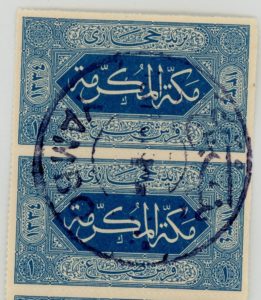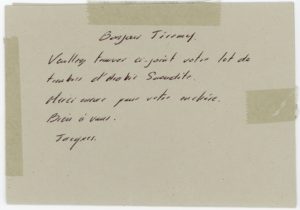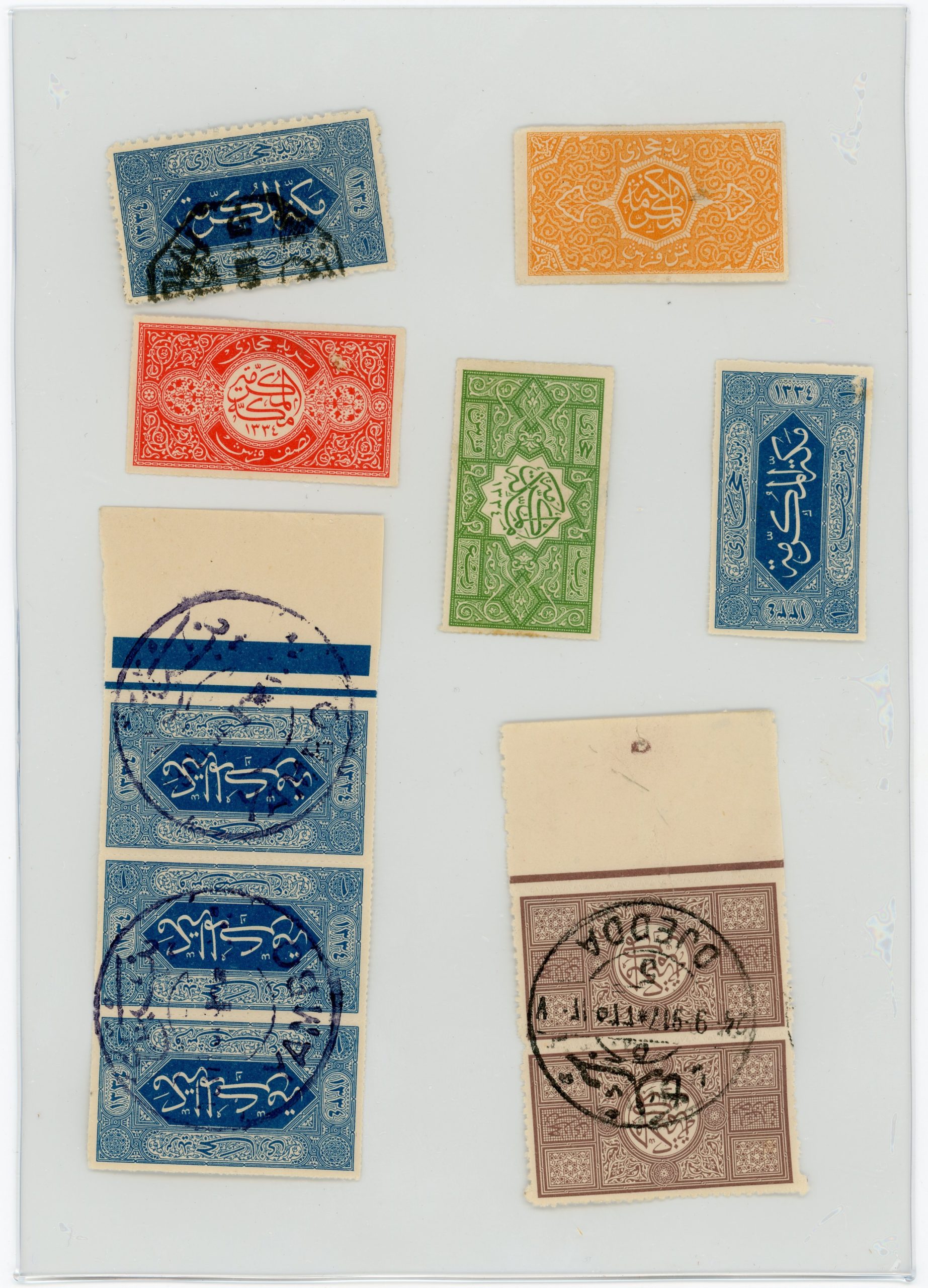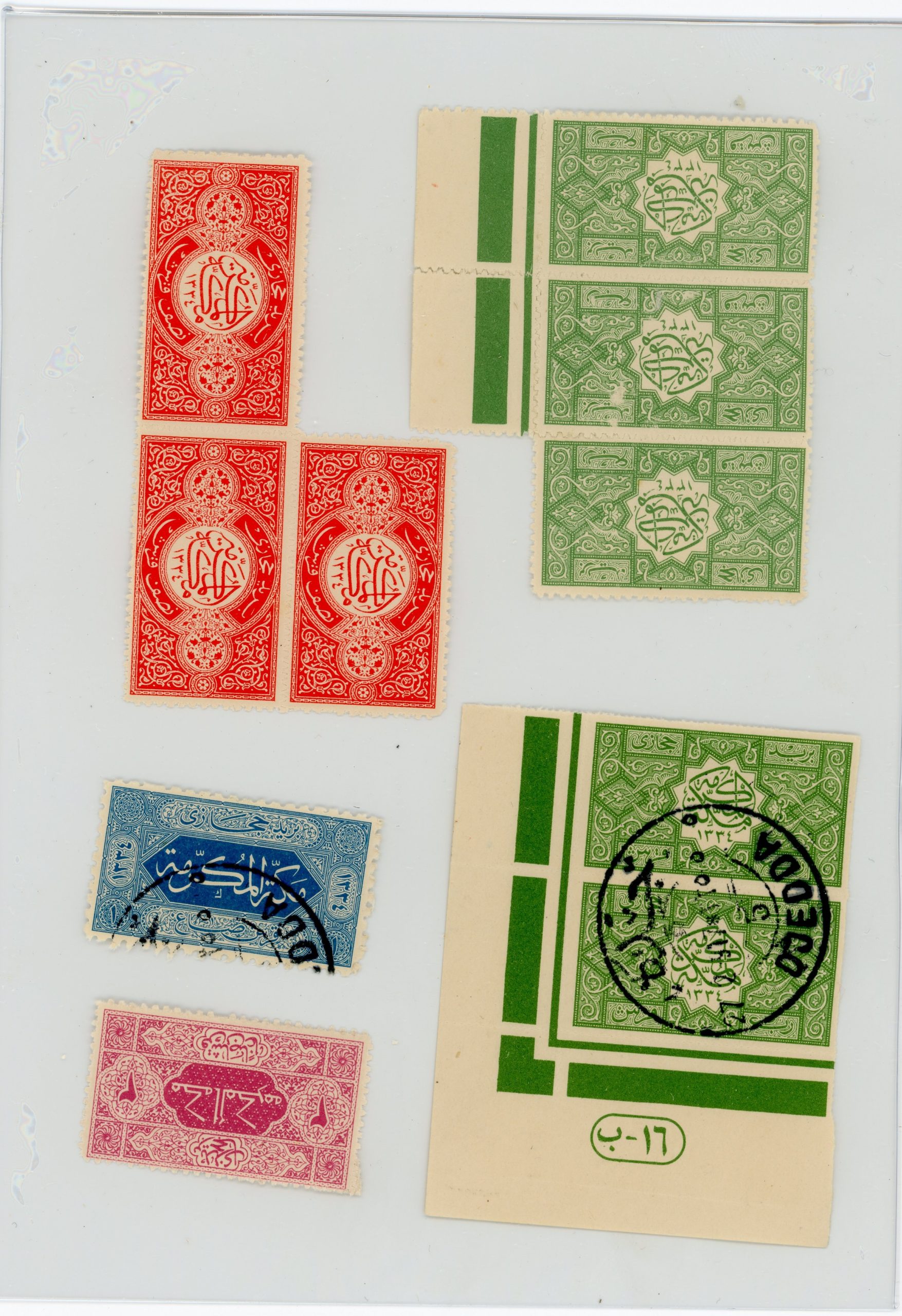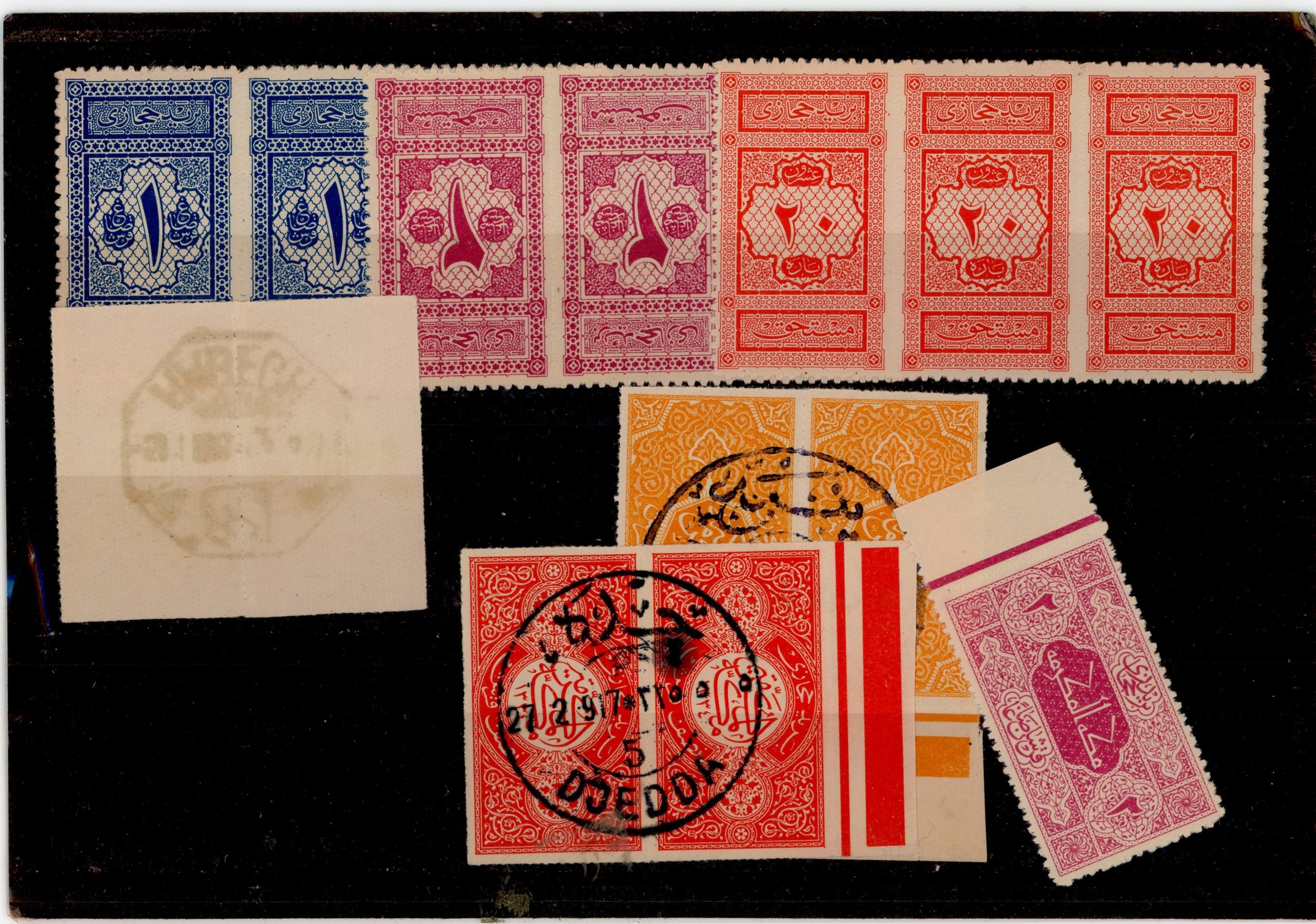I often find items in the Wilson collection without any context and then to work out what the items are, their authenticity, and where they come from!
One such example was a set of stamps which were stored in a box of random material, with some preserved inside a plastic wallet and others scattered loose. A quick look suggested that they were Hejaz stamps, which were designed by the Arab Bureau in 1916 for circulation in Arabia as part of the British involvement with the Arab Revolt.
The stamps were designed by T.E. Lawrence and Ronald Storrs, following research in the museum in Cairo. Daryl Green and Rory McCarthy write in our Lawrence of Oxford exhibition catalogue of 2019 that the design of the stamps was deliberately Arabic in appearance to distinguish them from Ottoman designs, and therefore would proclaim the sovereignty of the Arab nation. Seen closely, the stamps are beautiful, covered in intricate designs involving overlapping patterns and Arabic script in vivid colours. According to Green and McCarthy, the text on the stamps reads “Mecca the Honoured”, the formal name of the holy city.
After consulting the designs for the original stamps, which can be seen in the Lawrence of Oxford catalogue (still available for purchase – details here), I realised that I had a full set of original Hejaz stamps! The stamps represented include a set of stamps for all values, as well as the three tax stamps.
Excited about these potentially rare items, I looked further at the cardboard cover of the stamps for clues about where they came from. There was only a note in French from someone called “Jacques”, which merely acknowledges delivery of the stamps to “Jéremy”.
Who was Jacques? Where did the stamps come from? And were they of any significance?
I carefully ensured that the loose stamps were properly preserved and catalogued, meaning to return to them later in the project. However, recently, following interest from old College member Michael Crystal QC (C 1969), who has made a significant contribution to our Lawrence collections in the past, my attention returned to the stamps and their potential rarity. Were they even more valuable than I had thought? Were they all used stamps, or were some of them proof designs from the Arab Bureau itself? What was the significance of one of the stamps sent from Jedda in 1917? Could this have been used on an Arab Bureau communication?
